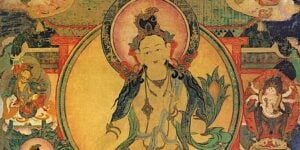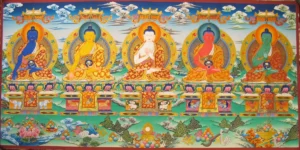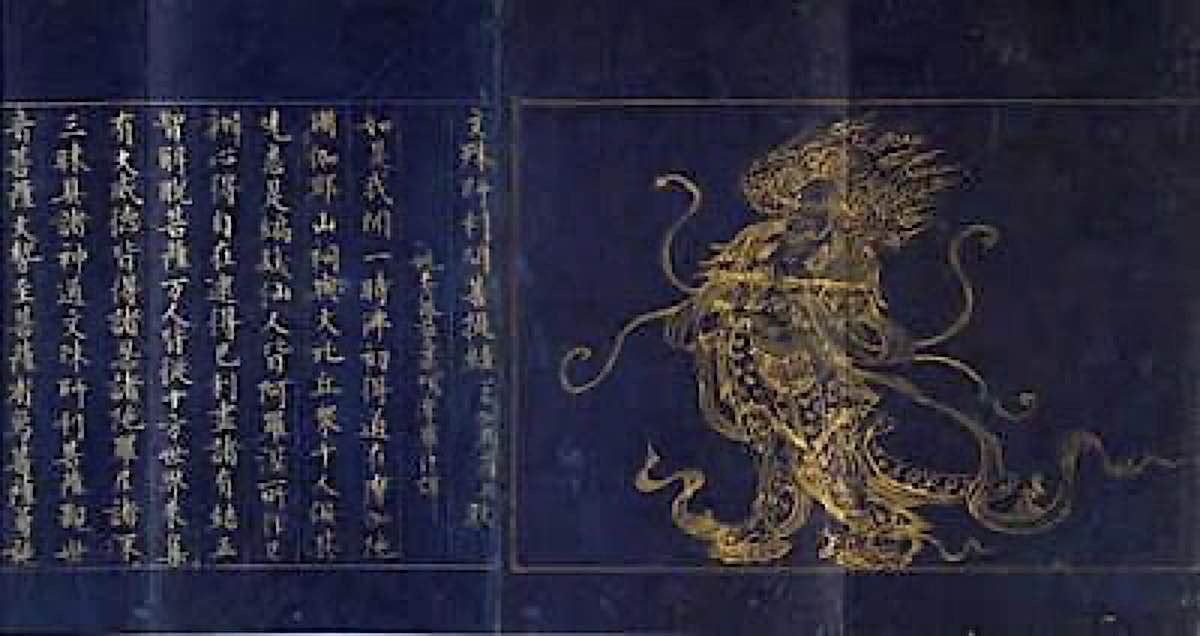Is there room for the supernatural in Western Buddhism? Four sutra views of magic and metaphysical and why a supernatural perspective helps “see beyond ordinary perception”
Does removing the magic from Buddhist practice seem less — magical? Sometimes, with a secular approach to Buddhism, we strip away some of the flair, the near euphoric joy of the Buddha’s Dharma. That “bliss” can be an important part of practice, especially in Vajrayana. Even Tantric Buddhism, with all its supernatural wonder and magical “taste,” is reduced — by many modern practitioners — to “symbolic archetypes” and mind-states. In the West, many — perhaps most — Buddhists like to turn their backs on a term like “metaphysical” or “religion” and refer to the Dharma instead as philosophy and method.
Viewing the path as bursting with sacred, supernatural manifestations of Enlightenment actually can enhance practice and understanding — for some people. Lotus Sutra, brimming with wonder, is deeply profound. Another person will be repulsed by such views and might embrace the rationalist views of many suttas, such as Cula-Malunkyovada Sutta. Yet another person might resonate strongly with the deeply philosophical flavour of Heart Sutra — which many Quantum Physicists would embrace. Then, there are the blissful Vajrayana Tantrics, who see beyond conventional reality, and who couldn’t imagine a world without a magical Dakini. There’s no reason to call one right and another wrong. Each is right for a different person.
A taste for the miraculous can inspire us
A few months ago, we set out to review, a wonderful book by Jason Espada — famous for compiling A Buddhist Library of sacred teachings, and recordings. His book, A Belief in the Miraculous: Buddhism, Magic, and a Sense of the Sacred, presents a compelling case for faith and devotion in something “beyond” ourselves, and, wonderfully, he opens with a quote from Ibn ‘Arabi, the great philosopher:
‘Beware of confining yourself to a particular belief and denying all else, for much good would elude you – indeed, the knowledge of reality would elude you. Be in yourself for all forms of belief, for God (Truth) is too vast and tremendous to be restricted to one belief rather than another.’ [2]
In a chapter titled, “Blessing, Faith and Devotion” Jason writes of the more practical aspects of faith and devotion:
“Alone one night, out of distress and shorn of pride, crying out, the hook of our faith can, in that moment, catch a pure force at work everywhere in the world. And our lives can change just like that… The world can become luminous again, larger by an untold measure, as new possibilities dawn.” [2]
What’s your taste? Psychology or Spiritual? Science, or Magical?
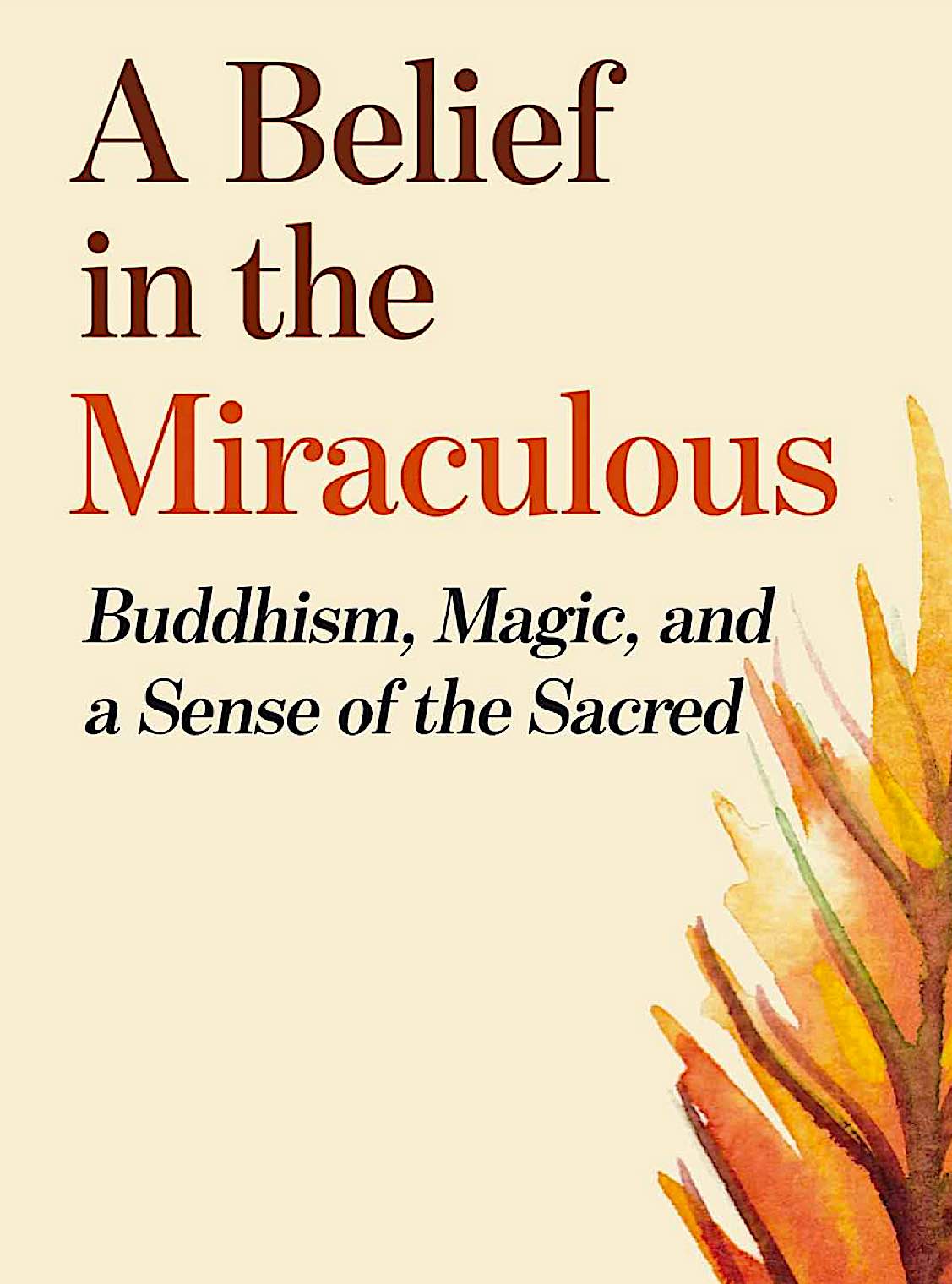
At risk of stereotyping, Western Buddhists tend to place more emphasis on psychology and philosophy in practice, while in Eastern Buddhism, there is a wondrous and magical dimension to practice. Is there room for both? Are they mutually exclusive? Is it too dualistic to say one is right and one is wrong?
Buddha himself taught us to avoid thoughts of “this, not that” or “That, not this.” Are we our physical bodies, or are we our mind? In the dualistic space of “physical body” and physics, there may be less room for the supernatural. In the opposite dualism of “mind”, there is endless space for all realities, since, as well accepted in Quantum Physics: “Reality is what you make it.” [1]
Four views — all correct?
There are four ways to view the “supernatural” aspects found in sutra, tantra and daily practice (and many permutations in between) — and, all can be considered correct, depending on your point-of-view. Rationalists and scientists will immediately disagree: there can be only one truth. Artists and creative types will argue that spiritual wisdom is found in intuition and inspiration, rather than logical deduction.
The four views could be described this way:
- View 1: The supernatural or metaphysical is unimportant: Buddha made it quite clear that all attachments (including to deities and “magic”, if you believe in them) are nothing more than the cycle of Samsara, another attachment to be remedied. In Cula-Malunkyovada Sutta, he refused to answer questions of a Metaphysical nature. Why? Because they are “not important” to the path to Enlightenment.
- View 2: The complete opposite, that deities, magic and the metaphysical are subjectively real: For those who embrace the wonder of the labelled, including supernatural labels, this is just another relative aspect of what we perceive to be a reality. In the Mahayana sutra, there is room for the supernatural —and all things — but, at an ultimate level, all phenomenon are not as they appear to us — and all is Emptiness (Shunyata) or Oneness. (Mahayana Buddhist view)
- View 3: The supernatural and magical aspects are symbolic or metaphorical: Buddha would have spoken in terms commonly used in his day. It’s easier to say “Brahma” — as he did explicitly in Brahmajala Sutta — than to say “creative force.” It is easier to visualize a deity with 1000 arms than to say “compassionate force.”
- View 4: That all phenomena are ultimately non-dual — or as is often said, “not two” — perceptual, rather than tangibly “real,” and from this view, all are “aspects” of a One-ness. In this Mahayana view, not only are the “gods” and supernatural beings ultimately not real, the “you” and the “I” are not ultimately real, either; we are nothing more than ego and labels and incorrect perception. Or, the flip side — both are real in relative, dualistic terms, if you perceive them to be real. For example, one of the goals of Vajrayana deity practice is to help us see through dualistic appearances. One method: we visualize our “selves” as deities to help us understand both Emptiness — Shunyata or Oneness — and the doctrine of overcoming “ordinary appearances” of duality.
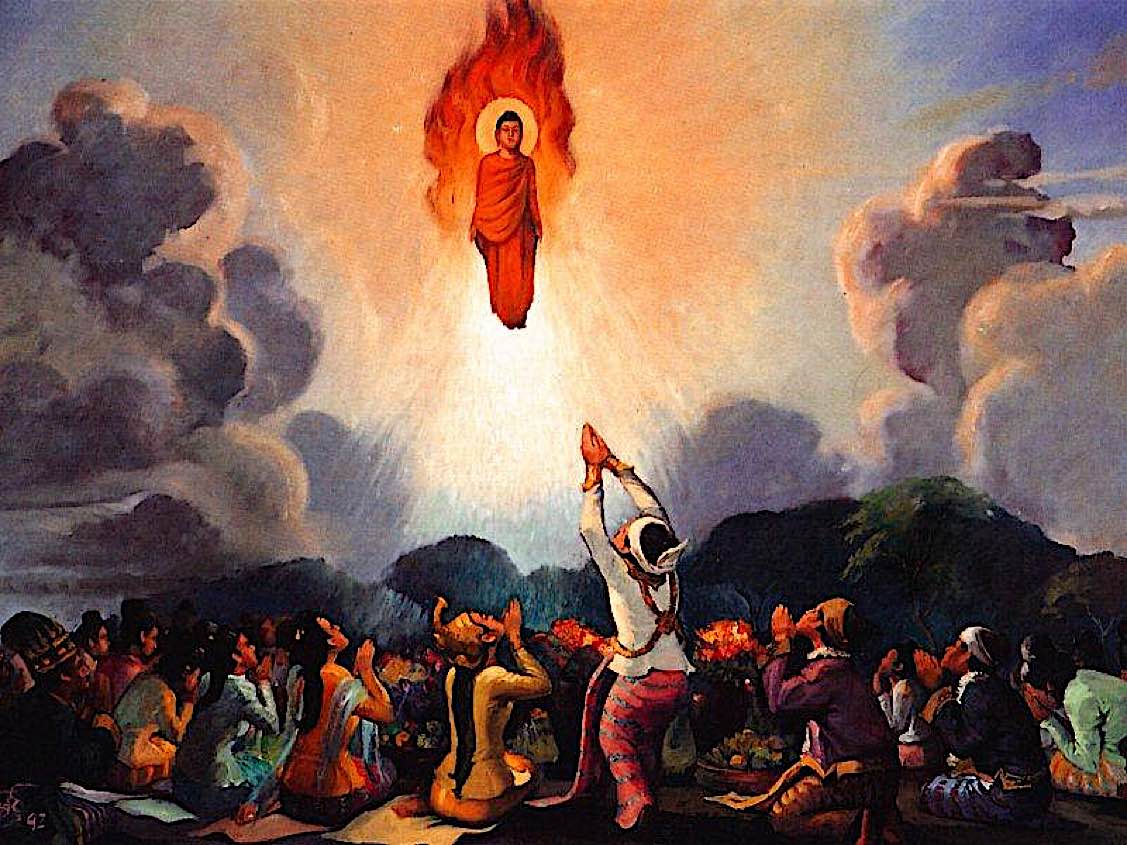
All can be correct views: Buddha taught skillfully
To be clear, all of these views could be considered correct and true to Buddha’s teachings. You do find Enlightened Bodhisattvas and Buddhas and deities in Sutra and Tantra. You do find views that ultimately gods are unimportant or illusory. They aren’t necessarily contradictions. They are labels for concepts, and there’s room for all of them in relative, dualistic reality.
Buddhism is so widely embraced, in part, because there is no contradiction. Buddha famously taught “skilful means.” There is a path for every view, and all are correct. If he taught to a Brahamist (a religious person) his teachings would be wrapped in resonating language. Hypothetically, if he taught to a group of modern scientists, he would focus on Shunyata and Dependent-Arising. [For a full feature on Dependent Arising, see>>]
Rather than saying “this view” is correct and “this view is incorrect — another form of dualism which can be discouraging for practitioners — it is a defining characteristic of Buddhism that all views can be embraced.
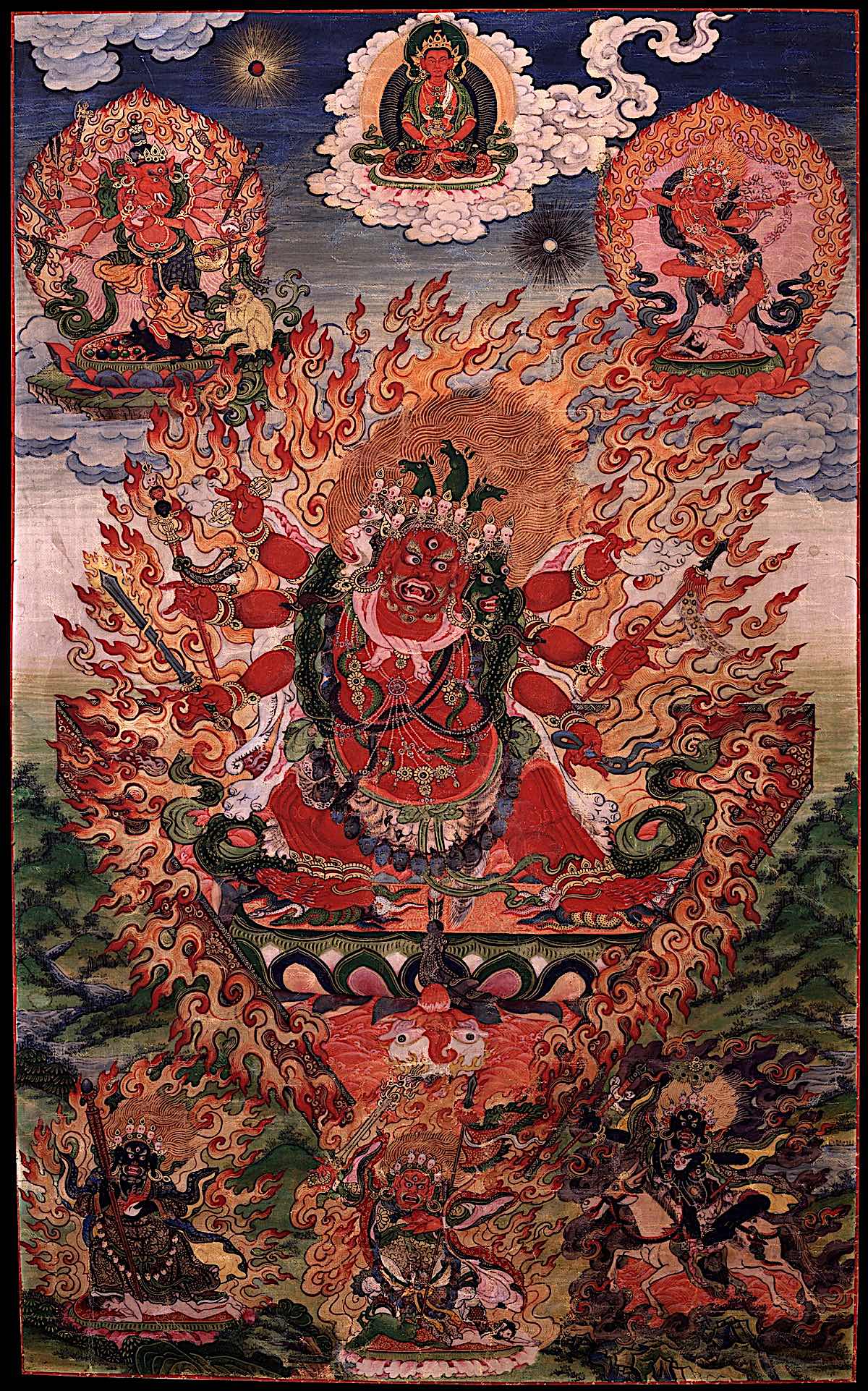
Four “Turnings”: from secular to magical?
Buddha, in Pali Sutta, avoided metaphysical questions, as Lee Clarke pointed out in his feature, What does Buddhism say about the idea of God?
He didn’t deny the supernatural, deities or even magic — he essentially pointed out they were ultimately unimportant to the path. He said:
“So too, Monks, the things I have directly known but have not taught you are numerous, while the things I have taught you are few. And why monks have, I not taught you those many things? Because they are without benefit, irrelevant to the fundamentals of spiritual life…” [3]
Why? Because, even in our view of reality, magic, and even science, have no power over cause-and-effect — karma. Buddha taught a path to stop the wheel of suffering, of karma, starting with the Four Noble Truths and the Eightfold Path. Clinging to gods and magic — or today we could say science and television — are the attachments that bind us to samsaric suffering. [For a feature on the Four Noble Truths and the Eightfold Path see>>]
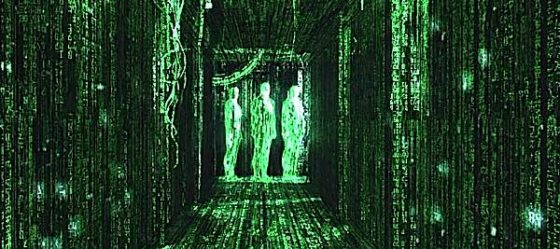
Magic is not the strongest force — its karma
“The strongest force in this world is not magic. It is the force of deeds, or karma,” wrote Venerable Master Hsing Yun. [4]
In Mahayana Sutra — the “Second and Third Turnings” as they are called by some — has a lot more to say on the supernatural. The vast majority of Buddhists worldwide are Mahayana Buddhists. In Mahayana teachings, Buddha taught in a worldly context that included the supernatural, Bodhisattvas, demons and deities. Although there is plenty of magic, again, it is clear that worldly supernatural affairs are karmic attachments, and even “gods” are subject to karma. Yet, at the same time, there is a wondrous world of Enlightened deities and Pure Lands — to help us on the path.
The second turning, Mahayana, brought us the important concept of Compassion and Bodhisattva conduct — and, critically, Emptiness or Shunyata. The third turning brought the important concept of Buddha Nature and Tatahagatagarbha.
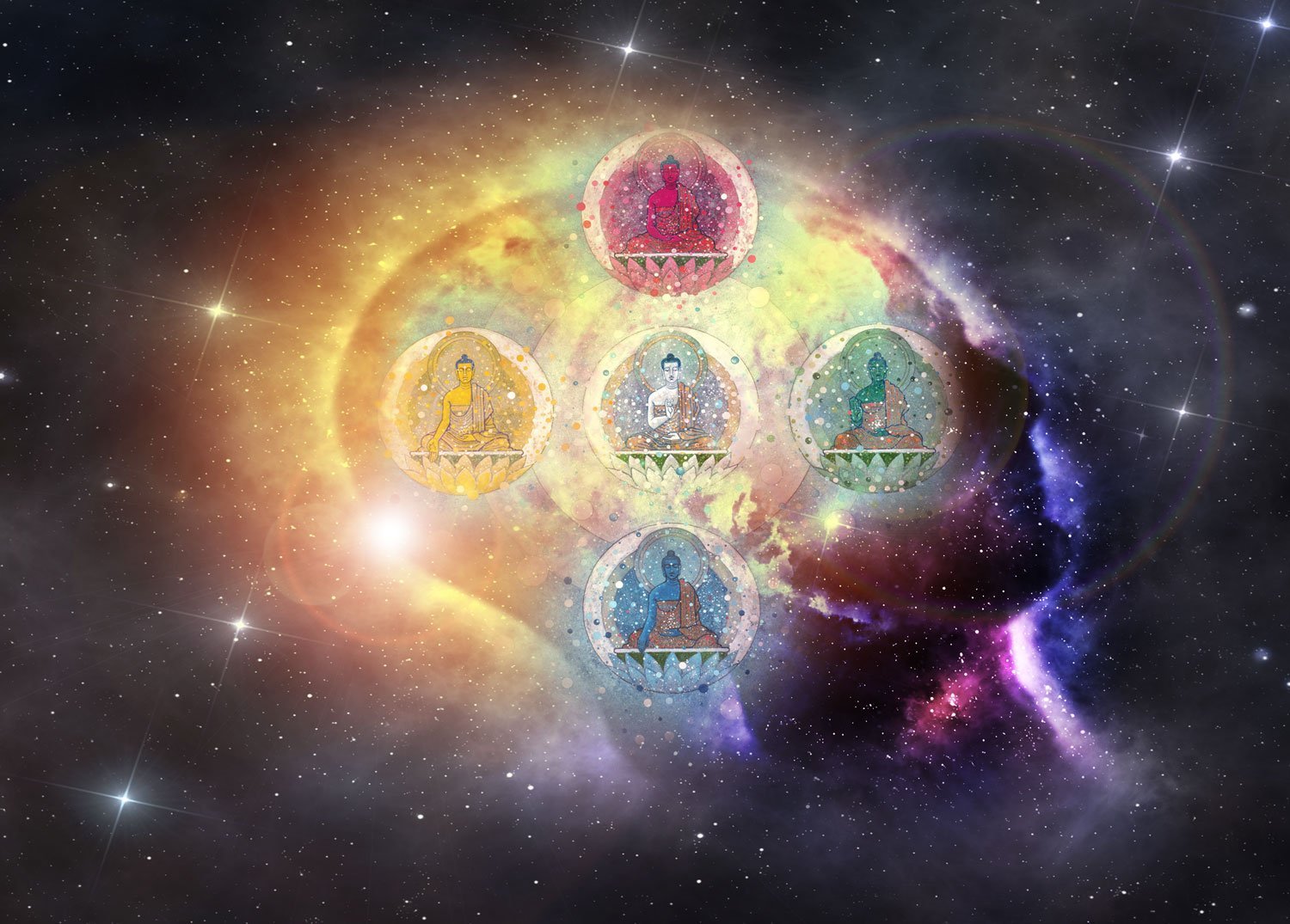
Then, there is the ultimate “mystical path” Vajrayana Tantra. As described in an excellent article by Liana Pomeroy:
“Tibetan Vajrayana or Tantra brilliantly uses deities for a diverse body of practices that teach us how to embrace every aspect of our humanness—which is both glorious and frightening. Deity practices at their most basic help us invite our shadow to come out and play. When we do that, we’re able to fully make friends with aspects of ourselves we’ve been avoiding or pretending aren’t there.” [5]
But — which path is right? In the context of our dualistic, relative reality, all can be embraced as skilful means. Ultimately, they point to the same result by different names. The recipes are different, as is the “taste” — but in the end, we are well nourished. Which then leaves the question: What’s your taste?
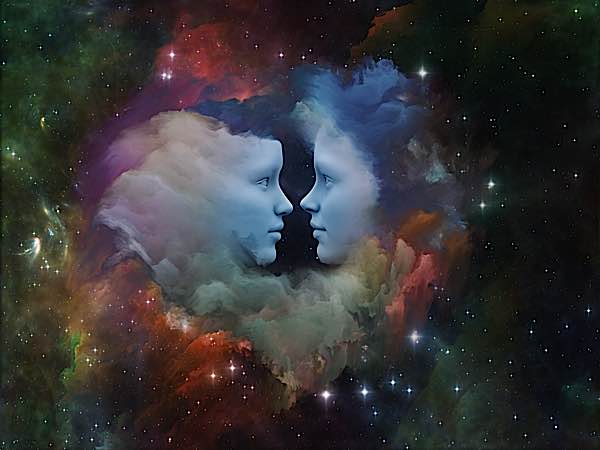
Receptivity versus Disbelief
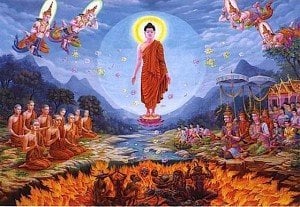 In Jason Espada’s book he describes “two types of faith”:
In Jason Espada’s book he describes “two types of faith”:
“The blessings of the Divine, of the Buddhas and Bodhisattvas, Saints, and liberated Sages encircle the globe at all times. Whether or not we are receptive to them, however, or draw these currents to ourselves, depends on our own inner state.
This is where faith and devotion come in. One kind of faith is receptivity. With it, we are open to something greater than ourselves reaching our lives, healing, illuminating, and guiding us.
Disbelief or spiritual pride block the receptivity we could have. Once we’ve made up our minds that things are a certain way, and that we are without support from the subtle realms, we’ve removed ourselves from the benevolence that is always here, at least consciously; And whether or not we put it in words, if we hold ourselves as equal to, or better than our wise spiritual guides, ancestors and teachers, we place ourselves above them, and can’t receive very much from them. Humility is a prerequisite for learning anything, and never is this more true than when it comes to connecting with the divine in human form, or from the unseen, archetypal levels.” [2]

“Buddha said this…” and “Buddha never said that…”
Buddhism is ultimately non-dualistic — yet it seems to still be filled with dualistic concepts. At the ultimate level, where dualism falls away, there is Oneness, as Venerable Thich Nhat Hanh puts it “inter-existence” or “inter-being.” With this in mind, and the teaching of Dependent Arising — that no phenomenon exist independently of the other — there is room for all views in Buddhism.
This is why it is unfortunate when Buddhists argue dogma. The most common comments we see are “Buddha said this…” then quoting a sutra. Or, “Buddha never said that…” without quoting any sutta. The fact is, that there are so many sutras and suttas it’s almost a given that Buddha had something to say on almost every topic. It is very narrow-minded to defend one sutta as genuine and another as “made up.” The point of sutra is not to be the “authentic word of Buddha” — it’s not the Bible. The point is, to make a point — and then, let us examine that point with our own minds.

Some minds are laser-focused on rationality, physicality and probability. Other minds are intuitive, embracing the wisdom and magic of poetry, imagery, creativity and potentiality. Some people believe supernatural aspects of sutta (or the Bible, for that matter) are metaphor and parable — others believe everything as “Bible” truth. One, views a deity and mandala as a psychological construct meant to convey in imagery a great truth. The other might literally embrace the essence of the deity’s reality.
There is one essential truth — both are right. Neither is wrong. At the level of relative truth, deities can very well be real. Remember, Quantum Physics tells us “reality is in the eye of the perceiver.” So, if you believe in deities, Bodhisattvas, angels, ghosts, demons — they are indeed very real relative to your reality. If you eschew the Quantum and embrace harder science, your reality will view these “beings” as “of your mind.” The doctrine of Dependent Arising tells us that all phenomenon are dependent on “other.” In the supernatural world, deities only require the perceiver’s mind — and the mind is virtually unlimited.

How can all be authentic?

One of the underlying foundation beliefs in Buddhist “philosophy” is the core truth that to escape Samsara’s suffering we have to remove attachments — including attachments to dogma and fixed ideas. Another core truth is the importance of no-self, ego-lessness, and Emptiness (or Oneness, as it is often translated.) A third, profound foundation understanding is we must “see beyond ordinary perception.” All of these core truths can be realized by an Athiest Buddhist, reflecting on mind and the nature of reality and ego, by a devotional Buddhist honouring Enlightened deities, and by a High Tantric Yogi who can visualize self as an Enlightened Deity. All, are valid and Buddha-taught paths — along with many more: Zen, Chan, Pureland. Skillful means, with something for everyone.
There can be a tendency in various schools to say “this is the authentic Dharma” while another might say, “No, this is the precious Dharma.” But, at the ultimate level, where dualisms are proven illusory, there is plenty of room for all. As Barbara O-Brien wrote in her article “Buddhism and Nondualism in Mahayana Buddhism”:
“In this sense, phenomena are both one and many. We can’t say there is only one; we can’t say there is more than one. So, we say, ‘not two.'”
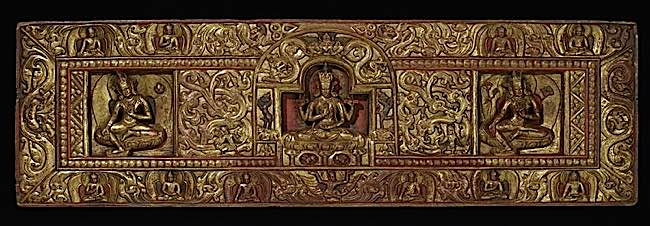
Why are some Sutras magical and others not?
Why there are so many Suttas and Sutras, seemingly brimming with Bodhisattvas, Buddhas, Dakinis, Protectors, hungry ghosts gods, nagas, vampires and other spirits, while others are precise psychological mind maps to practice? Generally, this is explained as “skillful means” — that, of Buddha, the Doctor, using every means to cure our malady — yet, it is more than that.
Quantum Mechanics has already established there is no “that” without “this.” Without a perceiver or observer, there is no object of perception. Or, put another way, the perceiver can affect who we view the perceived. As explained in Science Magazine, in “Quantum experiment in space confirms reality is what you make it”:
“An odd space experiment has confirmed that, as quantum mechanics says, reality is what you choose it to be. Physicists have long known that a quantum of light, or photon, will behave like a particle or a wave depending on how they measure it. Now, by bouncing photons off satellites, a team has confirmed that an observer can make that decision even after a photon has made its way almost completely through the experiment—seemingly well past the point at which it would become either a wave or a particle.” [1]
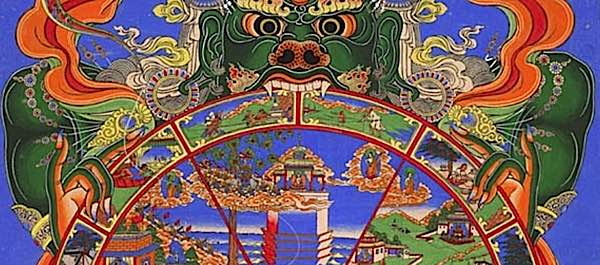
Dependent Arising
Everything is dependent on other in our relative world. Notably, even in our own bodies, there is no “body” without the “mind” to perceive it. However we perceive the universe, and the beings around us — including our view of supernatural beings — is our reality. It is not wrong. It is also not, ultimately, right either. At the level of Oneness, As-it-isness, and Emptiness, there isn’t even a you-me, they-us, samsara-nirvana. Until we embrace that realization, dualistic notions are what we have.
If our mind perceives Enlightened Beings, deities, or ghosts, they are as real, to me, as the keyboard I’m typing on.
Buddhist practice can embrace a magical or non-magical world. It is equally valid to practice Buddhism as atheists, devotional worshipers — and all permutations in between. This is why Buddhists say “not two” instead of “this, or that.”
NOTES
[1] Science Magazine “Quantum experiment in space confirms reality is what you make it.”
[2] Jason Espada. A Belief in the Miraculous: Buddhism, Magic, and a Sense of the Sacred
[7]Bhikkhu Bodhi ‘In the Buddha’s Words: An Anthology of Discourses from the Pali Canon’ (Wisdom Publications: USA, 2005). P. 360
[4] “The Buddhist Perspective on Magic and the Supernatural” by Venerable Master Hsing Yun.
[5] “Why stripping away the Magic of Buddhism is not the answer.” Liana Pomeroy, Elephant Journal
Latest Features
Please support the "Spread the Dharma" mission as one of our heroic Dharma Supporting Members, or with a one-time donation.
Please Help Support the “Spread the Dharma” Mission!

Be a part of the noble mission as a supporting member or a patron, or a volunteer contributor of content.
The power of Dharma to help sentient beings, in part, lies in ensuring access to Buddha’s precious Dharma — the mission of Buddha Weekly. We can’t do it without you!
A non-profit association since 2007, Buddha Weekly published many feature articles, videos, and, podcasts. Please consider supporting the mission to preserve and “Spread the Dharma." Your support as either a patron or a supporting member helps defray the high costs of producing quality Dharma content. Thank you! Learn more here, or become one of our super karma heroes on Patreon.
Lee Kane
Author | Buddha Weekly
Lee Kane is the editor of Buddha Weekly, since 2007. His main focuses as a writer are mindfulness techniques, meditation, Dharma and Sutra commentaries, Buddhist practices, international perspectives and traditions, Vajrayana, Mahayana, Zen. He also covers various events.
Lee also contributes as a writer to various other online magazines and blogs.



